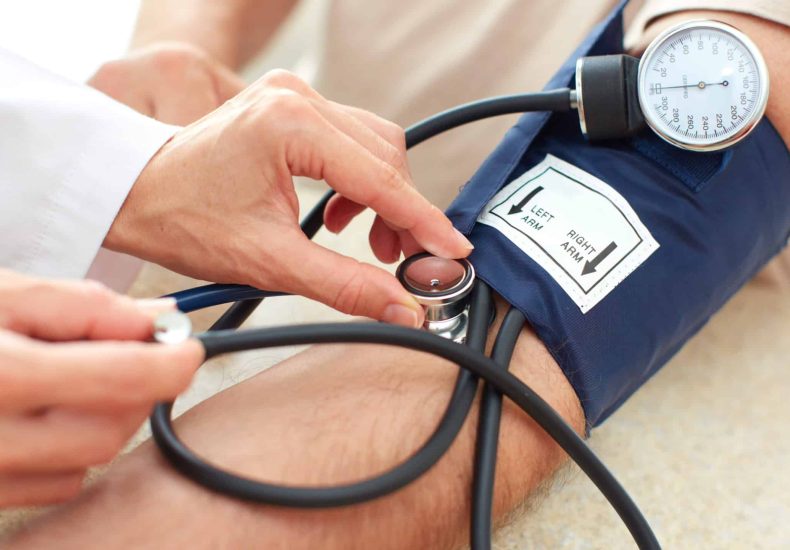
If You Think 120/80 Is Normal Blood Pressure, You Might Be Wrong!
Most of us grew up hearing that 120/80 mm Hg is “perfect” blood pressure. But medical experts now say that 120/80 is more like a threshold — a warning line — rather than a guarantee of long-term “safe” blood pressure. New guidelines are more strict, because research shows even slightly higher numbers can raise risk over time.
What the New Guidelines Say
The American Heart Association (AHA) and American College of Cardiology (ACC) updated their definitions around 2017. Here’s how the categories are now commonly defined:
| Category | Systolic (top number) | Diastolic (bottom number) |
|---|---|---|
| Normal | Less than 120 mm Hg | Less than 80 mm Hg |
| Elevated | 120-129 | Less than 80 |
| Stage 1 Hypertension | 130-139 | 80-89 |
| Stage 2 Hypertension | 140 or higher | 90 or higher |
So under the current standard:
- 120/80 is not in “normal” territory if either number is at or above those limits — you’re likely in the “elevated” category (if systolic is 120-129) or “Stage 1 Hypertension” (if 130 or more / or diastolic 80-89).
- “Normal” means both numbers are strictly less than — that is, under 120 for systolic and under 80 for diastolic.
Why This Change Matters
You’re probably asking: if 120/80 used to be “normal,” why change it? Because data shows:
- Early Risk: People with “elevated” blood pressure (120-129 / less than 80) are more likely to develop hypertension (higher stages) down the line.
- Heart & Stroke Risk: Even slightly higher pressures stress blood vessels. Over time this increases risk of heart disease, stroke, kidney damage, etc.
- Better Prevention: Catching blood pressure creep early means lifestyle changes (diet, activity, weight) can avoid needing medication later.
So, Is 120/80 “Bad”?
Not automatically — but it is a warning.
- If your reading is exactly 120/80 (or near that), you may still be classified as normal if your systolic is under 120 and/or your diastolic is under 80 — but if one of them is exactly on the line, you’re flirting with “elevated.”
- Even if you’re “only” elevated, it’s not something to ignore. Again: lifestyle matters, early action matters.
Also, doctors will often consider other risk factors: age, family history, kidney health, cholesterol, diabetes, etc. If you have those, your target blood pressure might need to be lower.
How to Properly Measure Blood Pressure
Getting an accurate reading is more complicated than just sitting down and letting the cuff inflate. Some common mistakes can give false “normal” or “elevated” readings. Here’s what experts recommend:
- Sit quietly for at least 5 minutes before measuring.
- Use a well-fitting cuff on the upper arm.
- Keep your back supported, both feet flat on the floor, legs uncrossed.
- Don’t measure after caffeine, exercise, or smoking for at least 30 minutes.
- Take two or more readings on different occasions to confirm.
What You Should Do If Your BP Is Elevated or Borderline
If your blood pressure is above “normal” but not yet in a high hypertension stage, here are practical steps:
- Lifestyle changes first
- Reduce sodium (salt) intake
- Eat more fruits, vegetables, whole grains
- Maintain healthy weight
- Increase physical activity (aerobic exercise)
- Limit alcohol and stop smoking
- Track it at home
- Invest in a good home BP monitor
- Keep a log, bring it to medical appointments
- Talk to your doctor
- If’s BP stays elevated after several months despite lifestyle changes
- If you have other conditions (diabetes, kidney issues, heart disease) you may need earlier medical treatment
Final Thoughts: What “Normal” Really Means
- “Normal” = under 120/80. Anything at or above those numbers needs attention.
- 120/80 is not a guarantee of being “safe forever,” just a goal.
- Knowing your risk and acting early can prevent a lot of future harm.
If you think “120 over 80 is just fine,” think again — it’s more of a starting line than a finish. Being proactive with your lifestyle and health can mean the difference between staying healthy and dealing with serious issues down the road.
Leave a Reply